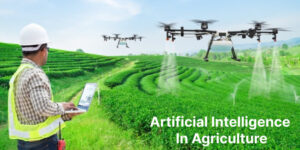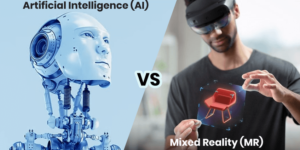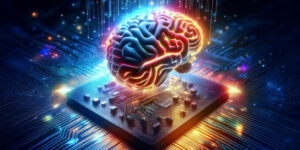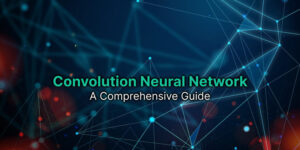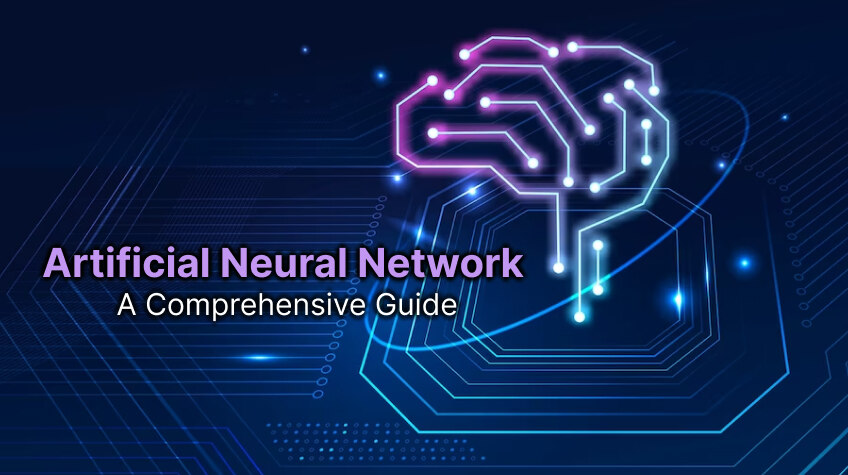
Welcome to the world of Artificial Neural Networks, where science meets the marvels of the human brain! Just as our minds process information through interconnected neurons, these cutting-edge networks mimic that intricate web to solve complex problems. Step into the realm of AI, where algorithms learn from data, making decisions and predictions like never before.
In this comprehensive guide, we’ll embark on a journey, demystifying the inner workings of neural networks, shedding light on their practical applications, and revealing their potential to shape the future. So, let’s delve into this captivating universe, where intelligence and innovation converge in a dance of technology and human ingenuity!
What is an Artificial Neural Network?
Artificial Neural Networks (ANNs) are a fascinating manifestation of human-inspired AI. Imagine a virtual brain built on interconnected nodes like neurons in our minds. ANNs process data, learn patterns, and make intelligent decisions like ours. They excel in tasks like image recognition, natural language processing, etc.
Each neural connection holds a unique weight, adjusting and refining itself through continuous learning from vast datasets. This intricate web of relationships forms the backbone of deep understanding, a powerful subset of machine learning. ANNs’ remarkable ability to adapt and generalize empowers them to unravel complex problems, promising a brighter future of innovative AI solutions.
History of ANN
The history of Artificial Neural Networks (ANN) spans over seven decades of remarkable evolution. Inspired by the human brain’s neural connections, the idea of neural networks dates back to the 1940s. However, progress could have been faster due to computational limitations. In the 1960s and 1970s, the Perceptron model emerged, making significant strides in pattern recognition.
The 1980s saw a decline in interest, known as the “AI winter.” But the 2000s witnessed a resurgence with technological advances. Fueled by ANNs, Deep Learning became a game-changer in the 2010s, leading to breakthroughs in image recognition, natural language processing, and more. Today, ANNs continue to shape cutting-edge AI applications, promising an exciting future of intelligent technology.
How Do Artificial Neural Networks Work?
Artificial Neural Networks (ANNs) work in a way that mirrors the human brain’s functioning. Imagine a vast network of connected nodes or neurons. Each neuron receives input data and processes it using a combination of weights and biases before sending the result to the next layer.
The network adjusts its weights to minimize errors and improve accuracy through repeated iterations and training on labeled data. This process, known as forward and backward propagation, allows ANNs to learn patterns and make predictions. By analyzing vast amounts of data, ANNs can recognize complex relationships, enabling them to perform functions like image and speech recognition, natural language processing, and more.
ANN vs BNN
Artificial Neural Networks (ANNs) and Biological Neural Networks (BNNs) are distinct in their origins and applications. Here are the fundamental contrasts between them:
ANNs (Artificial Neural Networks)
- Man-made models inspired by the structure and functioning of BNNs.
- Composed of interconnected nodes, layers, and weighted connections.
- Utilized in machine learning and deep learning applications for jobs like image recognition, natural language processing, and more additional.
- Processing is done using mathematical computations and algorithms.
- Faster computation and scalability due to its digital nature.
BNNs (Biological Neural Networks)
- Neural networks are present in the human brain and other living organisms.
- Made up of neurons, synapses, and neurotransmitters.
- Responsible for cognitive functions, perception, and decision-making in living beings.
- Processing involves chemical and electrical signals.
- Slower processing compared to ANNs but can handle complex and diverse tasks with remarkable adaptability.
ANNs are artificial models designed for specific tasks in AI and machine learning, while BNNs are the natural neural networks that underlie the intelligence and behaviors of living organisms.
Types of Artificial Neural Networks
Here are the 4 most commonly used ANNs
1. Feedforward Neural Networks
Feedforward Neural Networks (FNNs) are the pioneers of artificial intelligence, embracing simplicity and ingenuity. Picture a unidirectional journey from the input layer through hidden layers to the output layer. Like a chain reaction, each neuron processes the data using weighted connections, amplifying essential features and ignoring noise.
These networks are fueled by supervised learning, as they learn from labeled data, making predictions and adjusting their parameters to minimize errors. FNNs are versatile and excel in various domains, from classification tasks to function approximation. Their elegance lies in their ability to process data effortlessly, mimicking the human mind’s linear thought process.
2. Recurrent Neural Networks
Recurrent Neural Networks (RNNs) are the wizards of the AI realm, designed to harness the power of sequential data and time dependencies. Unlike their feedforward counterparts, RNNs possess a hidden layer that retains the memory of past inputs, creating a loop that allows them to process data sequences.
This magical ability makes them exceptional in language modeling, speech recognition, and time series prediction tasks. Just like reading a captivating story, RNNs unfold the context of each element, building a rich understanding of the data. However, they face challenges like vanishing gradients, but with advancements like LSTMs and GRUs, they continue to mesmerize with their contextual insights.
3. Convolutional Neural Networks
Convolutional Neural Networks (CNNs) are the artists of the AI world, revolutionizing image and video processing. Imagine them as master painters, adept at capturing intricate details and patterns. These networks employ convolutional layers, which filter images, detecting features like edges, textures, and shapes. Like a skillful artist’s brushstrokes, CNNs gradually abstract and analyze visual data, identifying objects and their spatial relationships.
Their ability to learn hierarchical representations enables them to recognize objects amidst varying backgrounds and angles. From facial recognition to self-driving cars, CNNs have left their mark on countless applications, reshaping how we perceive and interact with the visual world.
RELATED: Guide On Convolutional Neural Network Architectures and Layers
4. Generative Adversarial Networks
Generative Adversarial Networks (GANs) are the dream weavers of the AI realm, born to create and imagine. Picture them as dueling artists engaged in an eternal artistic battle. GANs consist of two parts – the generator and the discriminator. The generator attempts to produce synthetic data, like paintings on a blank canvas, while the discriminator acts as a critic, striving to distinguish real from fake creations.
This creative tussle pushes GANs to improve continually, generating increasingly realistic outputs. GANs unleash their magic in image synthesis, video creation, and even generating lifelike human faces. However, their dualistic nature demands careful balancing to avoid overfitting or mode collapse. Nevertheless, GANs’ artistic prowess holds promise for shaping a more imaginative and innovative future.
Training Neural Networks
- Supervised learning is a powerful technique where neural networks are trained with labeled data, meaning the data input is paired with the target labels.
- The loss function calculates the difference between the predicted output and target labels, quantifying the performance of the network.
- Optimization techniques like Gradient Descent and Stochastic Gradient Descent are employed to update the network’s weights iteratively, minimizing the loss and improving the model’s accuracy.
- Overfitting occurs when the neural network specializes in the training data and performs badly on new data.
- Regularization techniques, such as L1 and L2, prevent overfitting by adding penalty terms to the loss function.
- Dropout is another effective technique that drops neurons randomly during training, pushing the network to become more robust and preventing it from relying too much on specific neurons.
Applications of Artificial Neural Networks
Artificial Neural Networks (ANNs) find applications across various fields due to their versatility and powerful capabilities. Here are a few critical dimensions where ANNs are widely used
- Image Recognition: ANNs are employed in image classification, object detection, and facial recognition systems.
- Natural Language Processing (NLP): ANNs power language translation, sentiment analysis, chatbots, and speech recognition.
- Recommender Systems: ANNs drive personalized recommendations in e-commerce and content platforms.
- Medical Diagnosis: ANNs assist in disease detection, medical imaging study, and indicating patient results.
- Financial Analysis: ANNs are used for stock market prediction, credit risk assessment, and fraud detection.
- Autonomous Vehicles: ANNs enable self-driving cars to diagnose sensor data and make driving judgments.
- Gaming: ANNs enhance game AI, allowing NPCs to understand and adjust to player conduct.
- Robotics: ANNs aid in robotic control, navigation, and object manipulation.
- Drug Discovery: ANNs assist in identifying potential drug candidates and predicting molecular interactions.
- Environmental Monitoring: ANNs analyze sensor data to predict climatic conditions, pollution levels, and natural tragedies.
- Marketing and Sales: ANNs are used for customer segmentation, demand forecasting, and sales prediction.
- Anomaly Detection: ANNs help identify unusual patterns or behaviors in data for security and fraud prevention.
These are just a few examples, and as AI technology advances, the range of applications for Artificial Neural Networks continues to expand into new and exciting domains.
Implementing Artificial Neural Networks
Implementing Artificial Neural Networks (ANNs) involves essential steps and considerations. Here’s a detailed guide to building ANNs
Data Preparation
- Gather and preprocess the data, ensuring it’s clean and properly labeled.
- Split the data into training, validation, and testing sets.
Network Architecture
- Choose the appropriate type of ANN for your task (e.g., feedforward, convolutional, recurrent).
- Define the number of layers, neurons per layer, and activation functions.
Loss Function and Optimizer
- Select a suitable loss function based on the problem (e.g., mean squared error for regression, categorical cross-entropy for classification).
- Choose an optimizer (e.g., Gradient Descent, Adam) to reduce the loss during training.
Training the Network
- Feed the training data into the network and adjust the weights using backpropagation.
- Tune hyperparameters like learning rate, batch size, and number of epochs.
Validation and Early Stopping
- Validate the model on the verification set to monitor its performance.
- Implement early stopping to prevent overfitting and halt training when validation performance plateaus.
Evaluation
- Assess the model’s performance on the test set to objectively assess its effectiveness.
Fine-tuning and Optimization
- Experiment with different architectures and hyperparameters to improve performance.
- Implement techniques like regularization and dropout to enhance generalization.
Deployment
- Once comfortable with the model’s arrangement, deploy it in real-world applications.
Monitoring and Maintenance
- Constantly observe the model’s performance in production and retrain it occasionally with new data to keep it up-to-date.
- Building effective ANNs requires a balance of art and science, so experimenting and refining your approach is essential for success.
Advantages of Artificial Neural Network
Non-linearity: ANNs can model complex, non-linear relationships in data, making them suitable for various applications.
Adaptive Learning: They continuously learn from data, updating their weights to improve performance with more training.
Parallel Processing: ANNs can perform multiple tasks simultaneously, thanks to their distributed and parallel architecture.
Generalization: Once trained, ANNs can generalize their learning to new, unseen data, making them robust in handling diverse inputs.
Feature Extraction: ANNs can automatically learn suitable features from raw data, reducing the need for manual feature engineering.
Real-time Processing: With advancements in hardware and optimization techniques, ANNs can process data in real time, enabling quick decision-making.
Fault Tolerance: ANNs exhibit graceful degradation; even if some neurons fail, the network can still function and provide valuable outputs.
Versatility: They are applicable across various domains, including image and speech recognition, natural language processing, finance, and more.
Scalability: ANNs can scale to handle large datasets and complex tasks, thanks to advancements in distributed computing and GPU acceleration.
Human-like Decision-Making: In some cases, ANNs can emulate human decision-making processes, making them useful in AI-driven applications.
Disadvantages of Artificial Neural Network
Training Complexity: Training ANNs can be computationally expensive and time-consuming, especially for deep architectures and large datasets.
Overfitting: ANNs are prone to overfitting, where the model functions pleasingly on training data but badly on unseen data, necessitating careful regularization.
Lack of Interpretability: The black-box nature of ANNs makes it challenging to interpret the internal decision-making process, leading to reduced transparency.
Hyperparameter Tuning: Selecting the exemplary architecture and tuning hyperparameters can be daunting, requiring significant expertise and trial and error.
Data Dependency: ANNs require a substantial amount of labeled training data to perform well, limiting their applicability in data-scarce domains.
Hardware Demands: Implementing complex ANNs often requires powerful GPUs or specialized hardware, adding to the infrastructure costs.
Sensitivity to Initial Conditions: ANNs’ performance can vary significantly depending on the random initialization of weights, making results less reproducible.
Conceptual Understanding: Understanding the inner workings of deep ANNs can be challenging, hindering their adoption and maintenance by non-experts.
Lack of Causality: ANNs can learn patterns from data but might not provide causal relationships between variables, limiting their use in some scientific domains.
Vulnerability to Adversarial Attacks: ANNs can be susceptible to manipulation through carefully crafted inputs, posing security risks in some applications.
Artificial Neural Network Example
- Task: Image Classification (Distinguishing cats and dogs)
- Architecture: Convolutional Neural Network (CNN)
- Dataset: Collection of labeled cat and dog images
- Input Layer: 2D pixel values of the images
- Convolutional Layers: Detects edges, textures, and features
- Pooling Layers: Reduces spatial dimensions, capturing essential information
- Fully Connected Layers: Makes the final classification decision
- Activation Function: ReLU for non-linearity
- Output Layer: 2 neurons (Cat and Dog), softmax activation
- Loss Function: Categorical Cross-Entropy
- Optimizer: Adam for gradient-based optimization
- Training: Backpropagation to adjust weights for accurate predictions.
In conclusion, the world of Artificial Neural Networks (ANNs) is a captivating fusion of science and human ingenuity. As digital reflections of our brain’s neural connections, ANNs have evolved to tackle complex problems across diverse domains. From image and speech recognition to natural language processing and autonomous vehicles, ANNs have reshaped the landscape of AI and machine learning.
Their ability to learn, adapt, and generalize from data propels innovation, promising a future where intelligent systems enhance our lives in unimaginable ways. While challenges like interpretability and overfitting persist, continuous advancements in hardware and algorithms open doors to new horizons, making ANNs the heart of transformative technology.


